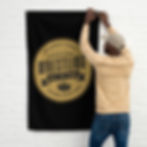Antonio Inoki: The Defender of Strong Style
by John Lister

You could call Antonio Inoki the biggest figure in Japanese wrestling of his generation. But that would arguably be underplaying his status.
Not only did Inoki spearhead New Japan Pro Wrestling’s long-term success as the number one promotion in the company, but he planted the roots of mixed martial arts in Japan. His matches in the 70s and 80s are ultimately the reason why the line between pro wrestling and MMA is blurrier in Japan than any other region.
While Rikidozan was the father of Puroresu, Inoki was his spiritual successor. He may never have reached the same mainstream iconic status but between network television exposure, two terms in Japan’s national legislature, and highprofile visits to countries including Iraq, the Soviet Union and North Korea, he was firmly on the public stage.
The record books show Inoki’s runs with the IWGP and WWWF championships, but it was his effect on the in-ring style and stories that most define his career. He was at home in the traditional Japanese format of national hero vs foreign invaders but would go on to play both roles in the ‘veterans vs rebellious upstarts’ model.
His most memorable role, though, was as the defender of ‘strong style’ professional wrestling against competitors from other combat sports. Most of the time this was strictly business, with ‘mixed matches’ against boxers, judo players, amateur grapplers, kickboxers and karate fighters. While the results were in no doubt, Inoki held up his end of the deal with credible performances that did not embarrass the men he defeated.
The most infamous match was the true ‘striker versus grappler’ contest as he fought Muhammad Ali in what turned into a legitimate battle with heavily negotiated rules. It was a critical flop but remained the most high-profile clash between different combat styles until the emergence of the Ultimate Fighting Championship two decades later. Japan’s own MMA juggernaut the Pride Fighting Championships stemmed from the likes of the UWFi and Pancrase groups but, arguably, its influences went back to the Inoki mixed match era.
In the 21st century, Inoki’s interests in the MMA scene undoubtedly became a negative for pro wrestling. His Bom-Ba-Ye MMA shows battled for TV ratings supremacy with Pride and K1 on several New Year’s Eves, but the notion of iinvolving New Japan grapplers in legitimate fights on both wrestling and MMA shows rarely worked out well.
The current generation of New Japan wrestlers and management built up their business after his departure allowed a clean break from his imposing presence on the business. But while he is no longer involved in the company, Inoki’s NJPW legacy remains.

Never was that clearer than on his last major public appearance in February 2019 when he attended a memorial show to mark two decades since long-time rival Giant Baba’s death. Inoki paid his respects from ringside, unwilling to break his personal vow to never step inside an All Japan Pro Wrestling ring.
If you enjoyed this article, checkout the rest of the Class of 2021 inductee pages and order your copy of the limited-edition commemorative magazine by visiting the International Professional Wrestling Hall of Fame Shop or by clicking here.



























